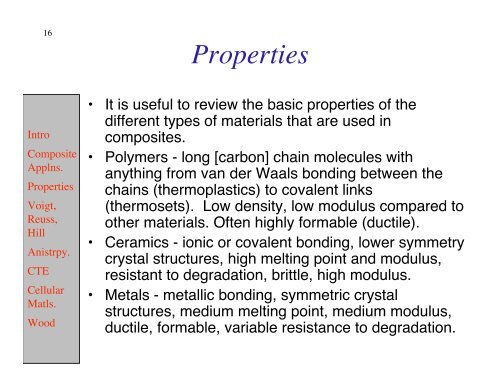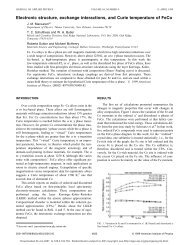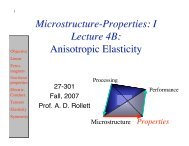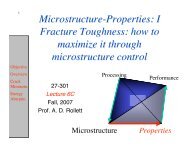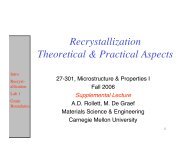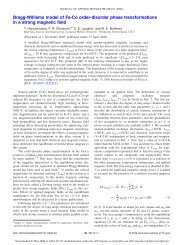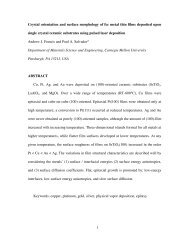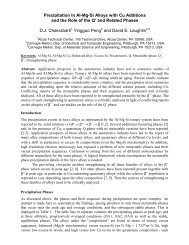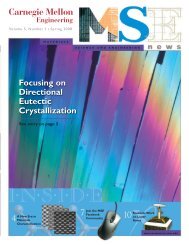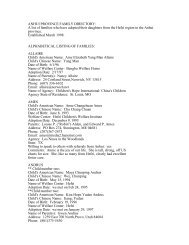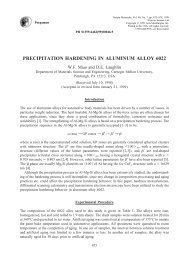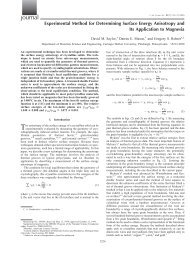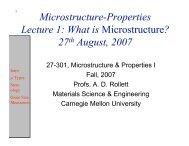L7 composites - Materials Science and Engineering
L7 composites - Materials Science and Engineering
L7 composites - Materials Science and Engineering
Create successful ePaper yourself
Turn your PDF publications into a flip-book with our unique Google optimized e-Paper software.
16<br />
Intro<br />
Composite<br />
Applns.<br />
Properties<br />
Voigt,<br />
Reuss,<br />
Hill<br />
Anistrpy.<br />
CTE<br />
Cellular<br />
Matls.<br />
Wood<br />
Properties<br />
• It is useful to review the basic properties of the<br />
different types of materials that are used in<br />
<strong>composites</strong>.<br />
• Polymers - long [carbon] chain molecules with<br />
anything from van der Waals bonding between the<br />
chains (thermoplastics) to covalent links<br />
(thermosets). Low density, low modulus compared to<br />
other materials. Often highly formable (ductile).<br />
• Ceramics - ionic or covalent bonding, lower symmetry<br />
crystal structures, high melting point <strong>and</strong> modulus,<br />
resistant to degradation, brittle, high modulus.<br />
• Metals - metallic bonding, symmetric crystal<br />
structures, medium melting point, medium modulus,<br />
ductile, formable, variable resistance to degradation.


